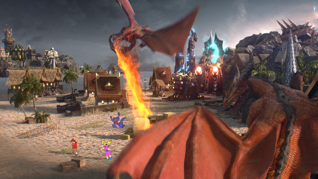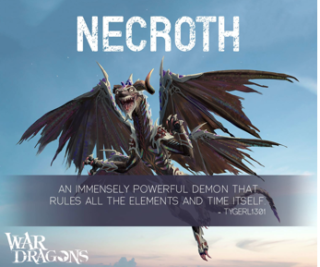 Story written by Chris Luhur, director of marketing at Pocket Gems
Story written by Chris Luhur, director of marketing at Pocket Gems
There are very few constants in life. Benjamin Franklin once said that the only certain things in this world are death and taxes. Had he made mobile games, Franklin may have added rising CPI costs to the list of certainties. Outside of CPI costs, however, mobile games marketing is very dynamic and is constantly adapting to meet the changing market. What worked last year may not work in 2016. Now that we’re halfway through the year, I wanted to reflect on how mobile developers can take advantage of the changing marketing landscape.
Pursue Longer Lead Timelines
Historically, mobile game developers don’t “pull the lever” on marketing until the day the game launches. They time their advertising, PR, app store featuring (hopefully), and social media to hit on the same day so they’re more likely to convert these to downloads. This usually results in a nice bump in players and gives the game a promising start in the highly competitive mobile ecosystem.
Today, mobile games are slowly becoming more like AAA-game experiences that can hold a player’s attention for years, deeply immersing them in the game’s universe. As such, the way in which you first introduce players to your game, or new features, should be adjusted. Mobile developers need to take a nod from Hollywood and console game developers by building excitement well before the game or feature goes live.
There are a few ways this can be done. Consider establishing a social media presence for your game three to six months before it goes live. Use this to slowly build buzz among potential players by giving them concept art, teaser trailers and Q&As with the game developers.
With our game, War Dragons, we’ve found that our players get really excited when we begin talking about new game features before they’re put in the game. For example, a week before we implemented a new defensive tower—the ice turret—we shared a mysterious silhouette of the structure on our social media and asked players to guess what it was. They had a lot of fun throwing out ideas and it built a lot of buzz for what would have otherwise been a relatively standard product update. It also gave us some more ideas for future structures.
Get More Creative With Your Creatives
In mobile games marketing, the quality of the creative has historically been less relevant. Developers used to be able to get away with a few screen grabs and maybe some gameplay videos that one of their ad partners made. This is also changing.
Creatives can be funny, dramatic and scary. They can stir emotions in your players and help them view your game as more than a disposable experience. With Episode, we’ve seen that the best-performing creatives are ones that can elicit a reaction from the viewer, even if it’s a little ridiculous. No matter what kind of creative you use for your game, development and testing has also become more important.
Developers should consider working with both in-house artists and external creative firms to make a steady pipeline of static and video creatives for all of their marketing channels. Once you have a diverse array of creatives, you need to test them rigorously to see which ones best meet your key KPIs and increase install rates.
Do Some Channel Surfing
While ad networks and traditional digital marketing channels continue to drive installs, new channels are constantly being developed, resulting in fresh opportunities developers should be exploring.

TV: The 2015 Super Bowl had three mobile games advertised and that irreversibly changed the way the world views mobile game creatives. Today, the industry is embracing brand advertising more versus solely depending on performance advertising. At a certain scale, developers should be considering a TV strategy. We launched our first TV campaign this year for War Dragons and will continue exploring TV for all marketing going forward. What’s most important to keep in mind here is that the barrier of entry is much higher for TV than digital marketing so it’s even more important that your creative is polished and impactful. Unlike digital channels, optimization and attribution is more difficult and costs are higher. All of this means that there’s less room for error when it comes to testing.
Streamers: If your game has strong multiplayer components, or is humorous, you should definitely be looking at streamers as a channel to promote your game. With War Dragons, we’ve found that the best way to do this is to identify streamers who may have an affinity for your game, based on what they play. Once you’ve found sympathetic streamers, approach them with some kind of unique perk, like in-game goods they can pass to their viewers. They get tons of requests to stream other games every day, so if you offer cool stuff for their viewers, they’re more likely to play your game.
Celebrities and influencers: In today’s world of entertainment with Vine, Snapchat, Musical.ly and Instagram, “celebrity” is a much broader term. Much like with streamers, there could already be someone out there with a significant following who is a fan of your game, or a similar game. Getting your game on their radar can have huge benefits and it could be as simple as outreach via email. Additionally, more networks are being developed that offer opportunities to work with influencers—in some cases on a CPI basis.
Other new platforms: Beyond the channels mentioned, there are always new channels being developed—whether it’s Snapchat, influencer networks, connected TV, playable ads or something that no one has ever heard of. There is constant innovation happening in the ad space. Being an early adopter or beta tester can reap great benefits as you’ll be able to learn and gain exposure with limited competition as these channels mature.

Put More Focus On Community And Content
With the rise of brand advertising also comes a greater focus on content marketing and community building. Mobile game marketing has moved from being just a hits-driven business where some games make it and others don’t, to one where community and engagement matters, increasing monetization and longevity of the user base. Because of this shift, more attention has been paid to creating organic content on social media channels like Facebook and Instagram, on streaming platforms like Twitch, and on owned media like your game’s website or forum.
My favorite example of this is when we had our Twitch channel design a dragon that was eventually put into the War Dragons. We gave Twitch viewers different prompts to vote on then an artist created a dragon using these in real-time while everyone watched. The dragon will soon be a playable character in the game. We also let players vote on what the dragon would be named, which eventually was Necroth.
Think Outside The User Acquisition Box
User acquisition has typically been the main driver when it comes to mobile marketing. This is also changing as the average lifespan of a game increases. Today, many mobile game marketers are diversifying and taking a more holistic approach to which stats really matter. For example, there’s currently movement toward incorporating retention and retargeting efforts, which in turn, can impact LTVs. Reengagement is also becoming more important as games develop more new content and features that may attract churned players back into the game.
Chris Luhur is a director of marketing at Pocket Gems overseeing both performance and product marketing for their core games. Prior to joining Pocket Gems, she led marketing at Twice, an e-commerce marketplace that was acquired by eBay in 2015. Previously, she also ran her own fashion e-commerce startup and worked at Goldman Sachs and Time Inc. A graduate of Stanford University, she also has an MBA from Wharton.

